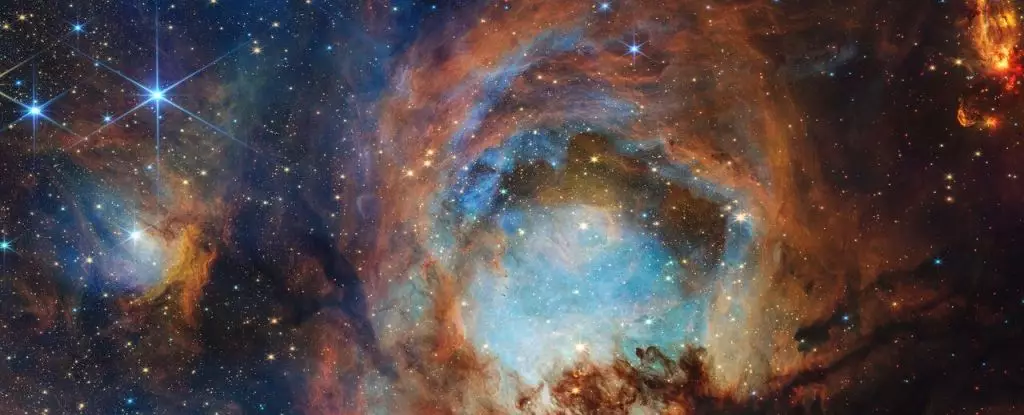The James Webb Space Telescope (JWST) stands as a testament to human ingenuity, pushing the boundaries of our cosmic knowledge by venturing into realms previously hidden from view. Unlike traditional telescopes limited to visible wavelengths, JWST’s infrared capabilities allow it to pierce through dense cosmic dust, exposing the intricate processes of star formation embedded deep within molecular clouds. This technological leap is not just a new tool—it is a paradigm shift in astronomy, transforming abstract hypotheses into observable phenomena. Instead of being constrained by the cosmic fog that shrouds stellar nurseries, JWST illuminates the universe’s most elusive secrets, revealing a dynamic and tumultuous process of creation that challenges our understanding of how stars—and by extension, life itself—come into existence.
The Enigma of the Cat’s Paw Nebula: More Than Meets the Eye
Positioned roughly 4,000 light-years away in the constellation Scorpius, the Cat’s Paw Nebula is an impressive and complex stellar nursery. Its name, borrowed from its visual resemblance to a set of enormous toe beans, belies its true significance: it is an active region of star formation. Here, vast clouds of dust and molecular gas serve as the raw material for new stars. Historically, these regions escaped detailed observation because visible light is scattered and absorbed by dust. JWST’s infrared vision, however, cuts through this veil, offering a candid view of the nebula’s inner workings. What emerges is a vibrant, chaotic landscape of collapsing gas pockets, forming the initial seeds of stars. The image captured by JWST is more than a photo; it’s an insight into a cosmic incubator that silently shapes the universe.
Star Formation in Unprecedented Detail
The clarity with which JWST captures the different evolutionary stages of star birth is nothing short of revolutionary. In the upper central region, dubbed the “Opera House,” a luminous young star is actively displacing surrounding dust, a final act in stellar infancy before emerging fully formed. Adjacent to this, more hidden within thick clouds of brownish dust, are fiery red blobs—stellar embryos still cocooned in their natal material. These regions are where gravity’s relentless pull is forging new stars amid a swirling chaos of gas. The presence of filaments and dense knots suggests a universe where star formation is a highly localized and nuanced process, not a uniform process as once thought. Fully formed, blue-white stars gleam freely, having blown away their shrouding dust, shining as beacons of success in cosmic creation. Such detailed imagery profoundly alters our understanding: star birth is a turbulent, multi-stage process marked by chaos, persistence, and eventual clarity, rather than a simple linear progression.
The Future of Cosmic Exploration
This unprecedented view of the Cat’s Paw Nebula serves as a preview of what JWST will continue to reveal about our universe. It demonstrates that the frontiers of knowledge are not limited by our technological reach but are only expanded by our curiosity and innovation. The telescope’s ability to unlock the secrets of star formation goes beyond mere observation; it challenges astronomers to rethink theories about how stars, planets, and ultimately life, come into being. Embracing this knowledge demands that we abandon complacency about cosmic processes and instead pursue a deeper understanding of our origins. As JWST continues its mission, each new image promises not just answers but new questions—probing the infinite universe with the relentless reassurance that humanity’s quest to comprehend the cosmos is far from over.

